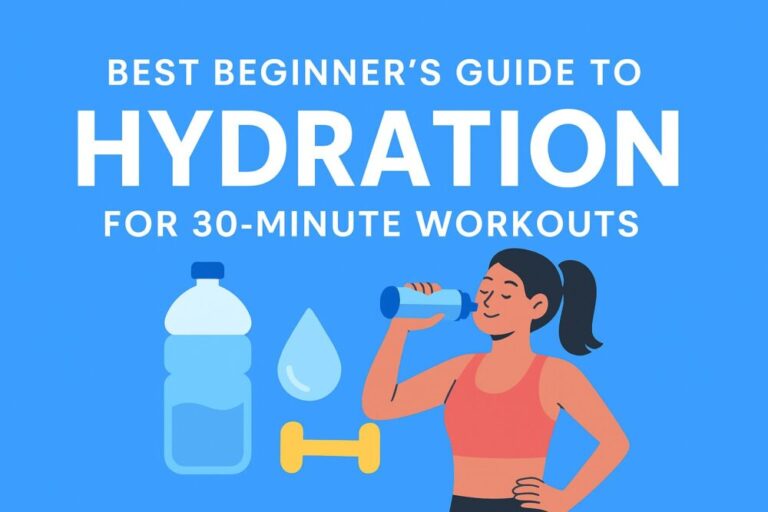Ready to transform your body and boost your fitness, all from the comfort of home? Our 30-Day Home Workout Challenge is the perfect way to kickstart your journey, build strength, burn fat, and stay consistent without needing a gym or fancy equipment.
Each day includes simple, time-efficient exercises targeting different muscle groups, with built-in rest days to support recovery. From body-weight circuits and core work to quick cardio blasts, this plan balances variety with structure, so you’ll never get bored. The best part? You can do it all in your living room, no excuses, just results.
So, are you ready to commit to 30 days of movement, motivation, and real results? Let’s get started—and don’t forget to track your progress and celebrate each small victory along the way!
What is a 30-Day Home Workout Challenge and Why It Works ?

A 30-day fitness challenge is a structured commitment to exercise daily for one month, helping you build consistency and form lasting healthy habits.
The idea is simple: by focusing on short-term, manageable goals, you’re more likely to stay motivated and stick with your routine.
According to James Clear, author of Atomic Habits, building habits through small, repeatable actions creates momentum and leads to long-term success.
So, the 30-day workout challenge works by offering variety, accountability, and a clear timeline, which are the key factors in helping people stay on track.
Whether it’s strength exercises, cardio circuits, or flexibility training, each day is designed to push you slightly outside your comfort zone while keeping it achievable.
Plus, studies show that it takes an average of 21–30 days to create a new habit, making this approach ideal for kickstarting a fitness lifestyle (Healthline).
How to Create Your Personalized 30-Day Home Workout Plan

Selecting Exercises That Match Your Fitness Level and Goals
When I start a 30-day workout challenge, I make sure to choose exercises that fit my current fitness level and support my personal goals.
That means if I’m just getting started, I’ll focus on beginner-friendly moves like squats, wall push-ups, and modified planks to build a solid foundation. As my strength and confidence grow, I gradually add more challenging exercises to keep things interesting and effective.
I always listen to my body and make adjustments when needed. If my goal is fat loss, I’ll include more cardio or advanced HIIT . If I want to build strength, I’ll prioritize bodyweight resistance moves.
By tailoring the workouts to what works for me, I stay motivated and avoid burnout. This personalized approach not only helps me stay consistent, but also ensures I get results that align with my fitness goals.
If you find it difficult to select the exercises or have a personalized meal plan, you can use online tools that generate 30-day fitness plans like our advanced tool HERE.
Organizing Your Week: Balancing Different Workout Types
When you plan your 30-day workout challenge, it’s important to balance different types of workouts throughout the week.
This approach keeps your body challenged, helps prevent plateaus, and reduces the risk of injury. For example, you might begin the week with a full-body strength routine, follow with a cardio session the next day, and then target your core the day after. Midweek, consider incorporating a yoga or flexibility workout to support recovery and mobility.
Don’t forget to include at least one full rest day or an active recovery session. According to the American Council on Exercise (ACE), recovery is crucial for muscle repair, mental focus, and long-term fitness gains.
By rotating workout types and allowing time for rest, you’ll stay consistent, energized, and more likely to complete the full 30-day challenge successfully.
Success Strategies for Your 30-Day Fitness Journey

Effective Ways to Monitor Your Progress
Tracking your progress during a 30-day home workout challenge is one of the best ways to stay motivated and ensure consistent improvement.
Start by taking before-and-after photos, noting how your body feels, and writing down how many reps or sets you complete each day. Use a fitness journal or app to log your workouts, rest days, and energy levels. This makes it easier to spot trends, celebrate wins, and adjust your routine if needed.
You can also track your measurements like waist, hips, or arms, once a week to see physical changes. For many, noticing increased stamina or strength is just as rewarding as seeing changes in the mirror. According to Healthline, consistent tracking boosts accountability and helps you stay focused on long-term goals.
By keeping a clear record of your journey, you’ll stay motivated, see what’s working, and stay on track toward your fitness goals.
Tips and Tricks to Stay Motivated Throughout the Challenge
Staying motivated during a 30-day home workout challenge can be tough, but with the right mindset and strategy, you can stay on track and enjoy the process.
First, set clear, realistic goals and remind yourself why you started. Write them down or keep them visible to stay focused. Break your challenge into weekly milestones, so each small win feels rewarding.
Next, create a consistent routine. Try working out at the same time every day to build momentum. You can also make your workouts fun by playing upbeat music, watching guided videos, or changing up the routines to keep things fresh.
Don’t forget to reward yourself for sticking with it, whether it’s new fitness gear, a relaxing rest day, or just recognizing your progress.
Joining an online fitness community or inviting a friend to join the challenge adds accountability and support. According to the Mayo Clinic, social support is one of the most effective ways to stay consistent with fitness goals.
Conclusion
Completing a 30-day home workout challenge is more than just checking off daily exercises, it’s a commitment to building healthier habits, improving your physical and mental strength, and discovering what you’re truly capable of. By organizing your workouts, tracking your progress, and staying motivated, you set yourself up for success not just for 30 days, but well beyond.
Whether you’re aiming to lose weight, boost energy, or simply feel stronger, this challenge offers a flexible, accessible, and rewarding path forward.
Remember: every small effort counts, and showing up for yourself each day is already a win. So, keep pushing, stay positive, and enjoy the journey you’ve got this!
Drop a comment saying ‘I’m in!’ to commit to the challenge and activate your subconscious mind for success!








[…] ensure you stay on track without overdoing it, consider following a structured plan like the 30-Day Home Workout Challenge. It offers a well-rounded approach that helps you progress steadily while preventing overexertion […]
Thanks for your feedback !
[…] is crucial for muscle repair and growth. Whether you’re doing bodyweight training or following a 30-Day Home Workout Challenge, ensuring you get enough protein helps maintain lean muscle and supports recovery after each […]